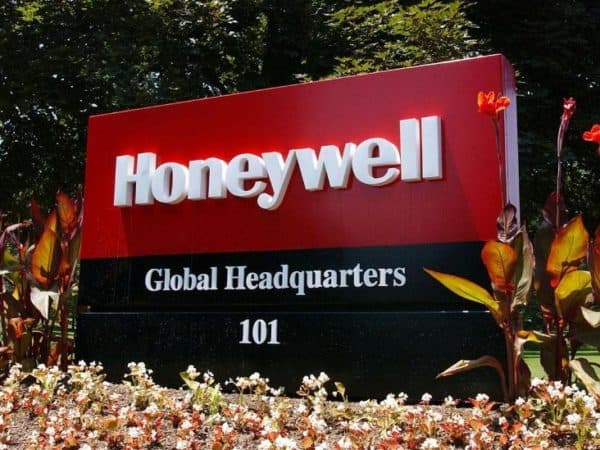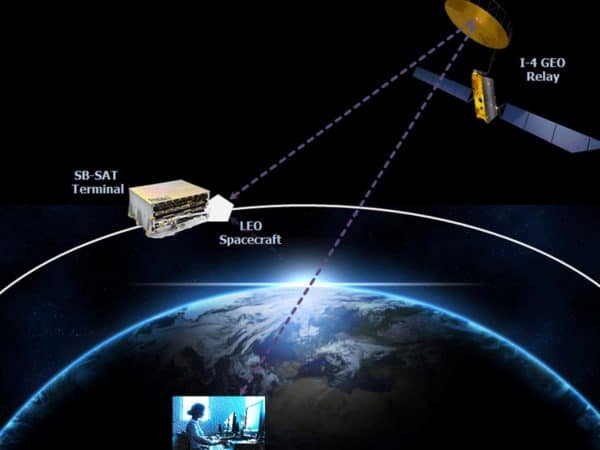
Innovate or die. That phrase was absolutely everywhere during the dot-com era. While a startup company that delivers pet food by mail, for instance, is hardly an innovation that resonates, this phrase has proved one worth remembering for more established companies looking to stay relevant. Last year, Cambridge’s COM DEV, a Company whose roots in aerospace go all the way back to the 70’s, launched exactEarth. This technology can aid in search and rescue, can help optimize shipping routes and, (perhaps most apropos of all) allows better environmental investigation and monitoring. We sat down with COM DEV CEO John Keating for “5 Questions” from Cantech Letter readers.
1. (from Dale in Richmond, BC)
I see that you have begun to work with MacDonald Dettwiler on a phase of RADARSAT. Can you characterize what COM DEV’s role will be and if you feel there is room for your company to continue to contribute to this mission?
John Keating:
COM DEV will be building significant elements of the payload for RADARSAT Constellation Mission (RCM), just like we did on RADARSAT-1. Given our involvement in the RCM program since its inception, we certainly believe that we will continue to be included in the design and manufacturing phases of the mission, which will be over the next several years.
2. (from John in Kitchener)
My question is about staffing. In the past 10-15 years RIM’s success has transformed the Kitchener-Waterloo area. Does COM DEV find it easier to find world class talent in the area now?
JK:
The growth of RIM, Open Text, Sandvine and a number of other local companies in addition to COM DEV has considerably raised the visibility of the Kitchener, Waterloo, Cambridge region as a major high technology hub on the global map. Not only does this help in terms of attracting candidates, it also greatly assists the universities and colleges in the area in obtaining additional funding to improve their high tech education and training programs and to attract research and development funding to the region.
COM DEV, which by the way is the original high tech company in this region, has always been blessed with a dedicated workforce with very low attrition rates but there is no doubt that the high profile of the KW triangle helps us to attract candidates and secure R&D funding and investments for our initiatives. Having said that, COM DEV, for many years, has had an excellent record of attracting the talent it needs. We have a very good reputation as an employer in the local community, so we often have people queuing up for an opportunity to join us. Because of our strong international presence and brand, we have also, by and large, been able to attract people from all over the world for some of our more specialized roles. In addition, we happen to have a very low voluntary attrition rate, which means that almost everyone who joins us sticks around.
John Keating on exactEarth: “Essentially, an effective S-AIS system can provide comprehensive data on every major ship in the world on a continuous basis. This level of detail could never be attained using traditional methods.”3. (from Dr. Uresh Patel in Mississauga)
As a longtime shareholder of COM DEV, I would like to know the following: Even though COM DEV has grown, we have not seen either of the two things an investor looks for; a share price increase or a dividend. I believe a listing on a US exchange, either the NASDAQ or the AMEX, would bring a lot more attention to the company. Are there any plans to do this?
JK:
COM DEV has been pretty clear in stating that it is our intent to reinvest in the Company to drive growth, rather than dividend out cash that we may earn. Since the current management team took over seven years ago, revenue has increased from $88 million to $240 million, which is a compound annual growth rate of 18%, well in excess of the underlying market. Over that same time frame, the profit has increased from -$1 million to $15 million and the balance sheet has strengthened considerably. Even though the share price has quadrupled from a low of $0.72 to a share price that has recently been in the $3.00 range, we recognize that it is volatile and has not grown at the desired pace in the last little while.
COM DEV is always looking for investment opportunities where the expected returns meet or exceed our threshold to justify those investments, both to ourselves and our shareholders. But we believe the value of some of our investments is not yet being recognized by the investment community, because these expenditures are suppressing short-term profitability. We anticipate that these investments in R&D and new businesses will deliver long-term share price appreciation – which has been, and always will be, our primary corporate objective.
To be fair, we have also stubbed our toes a couple of times by not performing as we should have, which has affected our valuation. Please be assured that there is a huge amount of effort going into making our performance more predictable and our results more consistent.
At this time, we don’t believe the solution to the creation of shareholder value is a US listing. Getting “attention” isn’t our biggest problem – demonstrated consistent performance is.
If we continue to make smart investments and demonstrate that they are contributing to our financial success and we manage our projects more effectively, we believe that the share price will look after itself and we will provide our shareholders the sort of return that they are looking for.
4. (from Mike in Lethbridge)
COM DEV was expanding into the US when the “great recession” hit. It seems like your profitability actually expanded during this time. How did you do this? Was there a period of time when everything just froze up on the order side, was your business immune to the recession, or did you have to do some tricky stickhandling to get through it?
JK:
The recession has had a much lesser impact on our business than many other sectors. In the Government Space arena, the amount of spending on space tends to increase modestly (GDP rates) but pretty reliably. Therefore, there has been little negative impact. The Commercial sector can be influenced by the broad-based economic conditions, but any downward pressure in that regard has been largely overcome recently by the positive upward pressure coming from the effects of the rollout of HDTV and the evolution of broadband access through satellite.
Taken together, these two markets have tended to grow at an annual rate of about 4.5% and are expected to grow at a similar rate for the foreseeable future. Over the last seven years we have grown at a compound rate of 18%, which is a testament to our ability to win market share at the expense of others. Part of that growth did, indeed, come from the US. Establishing ourselves in the US was one of our most important strategic objectives and we believe that we have only just begun to tap the potential of that market. Our investments in technology development and facilities over the last little while should stand us in good stead to take advantage of the huge opportunity that exists south of our border. Success will not be achieved overnight, but any long-term COM DEV investor should be very encouraged by this endeavour.
5. (from Sheila in Ottawa)
I saw today (May 19th) that COM DEV won the Premier’s Innovation Award from the Government of Ontario for a signal processing algorithm that enables the highly accurate detection of ships from microsatellites. In layman’s terms can you describe to me how your exactEarth product is an improvement over existing technologies or methods?
JK:
The traditional method of identifying vessels at sea involves using aircraft or ships to carry out surveillance by moving around trying to spot who is out there. This is obviously a very expensive solution, and not terribly effective. In addition, some organisations use coastal radar or satellite-based radar to detect targets some distance from the shore, but, unfortunately, although a vessel may be detected, you will not know who it is. More recently, coastal Automatic Identification System (AIS) receivers are being deployed, particularly around ports, to take advantage of the fact that over 70,000 ships are already mandated to transmit AIS signals (to enable “Safety of Life at Sea” capability).
The problem with all of these systems is that they are limited in range, are not comprehensive, do not provide continuous monitoring and can be very, very expensive. (Flying an aircraft on patrol can cost $100,000 an hour or more.)
In 2005, COM DEV determined that a space-based AIS detection system (S-AIS) could be a useful tool in further enhancing maritime surveillance. Satellites have a field of view of 5,000 km as they pass over the oceans. And the AIS signals tell you the information maritime authorities are really interested in, such as a ship’s identity, precise location, and heading. Essentially, an effective S-AIS system can provide comprehensive data on every major ship in the world on a continuous basis. This level of detail could never be attained using traditional methods.
The challenge of S-AIS is that satellites passing over the busiest shipping routes may detect thousands of simultaneous AIS transmissions and it becomes very difficult to distinguish one from the next. The innovation we were recognized for was figuring out how to “de-collide” the AIS signals so that our satellites can detect the vast majority of vessels regardless of traffic density. No one else in the world has figured out a way to match our detection rates and we’ve applied for patents on this technology.
The exactEarth S-AIS system is not intended to replace the more traditional surveillance tools, but rather is intended to be a valuable supplementary tool for hundreds of competent maritime authorities around the world. So far, we have received a great deal of interest from these people and we are beginning to sign trial agreements that will come into force as we start to deploy our operational system this year.
Comment
One thought on “Catching up with COM DEV (TSX:CDV)”
Leave a Reply
You must be logged in to post a comment.





 Share
Share Tweet
Tweet Share
Share




Great article. I’ve been following ComDev for some time and think they have great potential. The stock has just been punished and with it trading at $1.90 its at the same price it was in 2005. Lets see what the next couple years have to offer.
Pedro R.